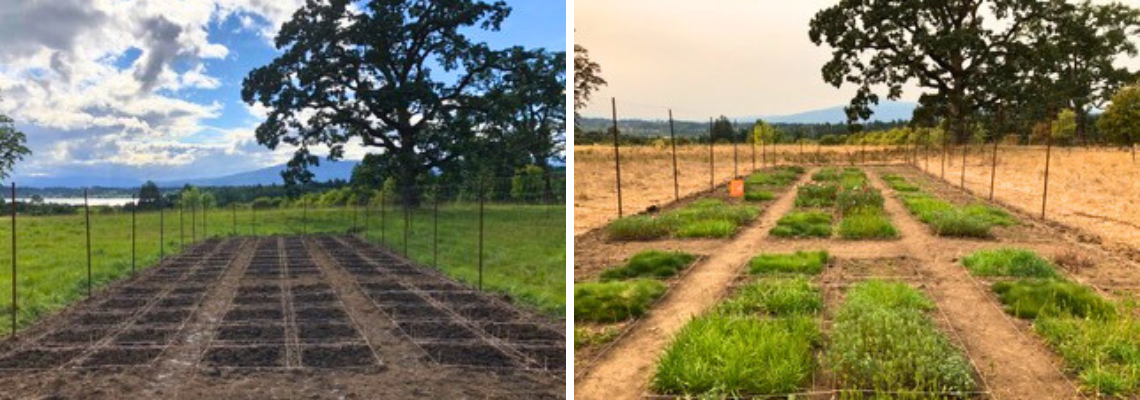Better Together: Unveiling Plant Cooperation in the Face of Nutrient Enrichment and Herbivory

Photography courtesy of Hannah Carroll
In the peaceful grasslands of southeastern Vancouver Island lies a hidden battlefield where plants must contend with multiple threats: changing environmental conditions, herbivores, and competition from other plants. This complex ecosystem sets the stage for a paper recently published in the Journal of Ecology, led by Integrative Biology’s Dr. Andrew MacDougall and Dr. Oliver Carroll, that reveals a surprising twist in the tale of plant survival.
These grasslands experience a phenomenon known as eutrophication — where nutrients, particularly nitrogen, are added to the environment as a result of human activities (e.g., fertilizer use). Access to higher nutrient levels are typically thought to bolster plant growth. But, as it turns out, this nutrient boost doesn't just feed the plants, it alters their interactions, tipping the scales in a delicate ecological balance.
Scientists have long believed that more nutrients in the soil would intensify competition among plants, with stronger plants overshadowing those that are weaker. Yet, Carroll's field experiments suggest a different narrative — one where cooperation, not competition, might hold the key to survival.
“Since the beginning of my PhD, I’ve been interested in the theoretical conceptual frameworks that exist in ecology,” explains Carroll, lead author of the study and recent PhD graduate. “I became interested in coexistence theory and how it can be used to predict how species and community diversity is maintained in ecosystems. At the same time, it also seemed to have the potential to help answer a lot of applied questions, such as how communities might respond to global change.”

The researchers focused on how four grassland plant species interact (including three grasses and one herbaceous flowering plant) under varying levels of nutrient enrichment. Their findings show that while nutrients do promote plant growth, their presence also increases the vulnerability of plants to herbivores. In this nutrient-rich scenario, plants that might otherwise dominate are often nibbled down before they can outcompete their neighbours.
Intriguingly, the study illuminated the crucial role of facilitation — a process where species benefit from another species’ presence. In environments rife with herbivores, these neighbouring plants can act as shields, offering protection that is vital for survival. This effect was most pronounced when plants were clustered closely together, turning potential competitors into unexpected allies.
This shift from competition to facilitation under nutrient-rich conditions is a significant finding, because it suggests that plant communities might respond to environmental changes in unexpected ways. It challenges long-held ecological theories and offers new insights into how we might manage and conserve our natural landscapes amid global changes such as nutrient pollution and climate change.
The implications of this research extend well beyond academic circles. For conservationists and land managers, understanding these interactions can inform strategies to foster biodiversity and maintain ecosystem stability. It could lead to new approaches in managing and restoring grasslands — not just as collections of competing plant species, but as dynamic systems where cooperation may be just as important as competition.
This study was funded by the Canada First Research Excellence Fund, the University of Guelph's Food from Thought program and the Natural Sciences and Engineering Research Council of Canada.
Read the full study in the Journal of Ecology.
Read about other CBS Research Highlights.